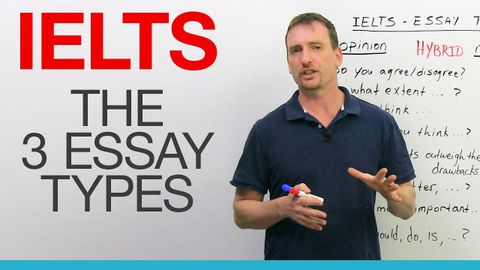IELTSのライティング。エッセイの3つのタイプ (IELTS Writing: The 3 Essay Types)
Summer が 2021 年 02 月 02 日 に投稿  この条件に一致する単語はありません
この条件に一致する単語はありませんUS /ɪˈsenʃəli/
・
UK /ɪˈsenʃəli/
US /əˈprəʊtʃ/
・
UK /ə'prəʊtʃ/
- v.t./i.近づく;話を持ちかける
- n. (c./u.)目的に近づく方法 : 道;交渉しようとして人に近づくこと;取り組み方 : 扱い方
US /ˈɑbviəs/
・
UK /ˈɒbviəs/
US /ˈrek.əɡ.naɪz/
・
UK /ˈrek.əɡ.naɪz/
- v.t.(~が本当であると)認める : 受け入れる;(重要性を)認める;法的権威を尊重する;公にその人の貢献を称賛する;認識する、認知する
エネルギーを使用
すべての単語を解除
発音・解説・フィルター機能を解除
